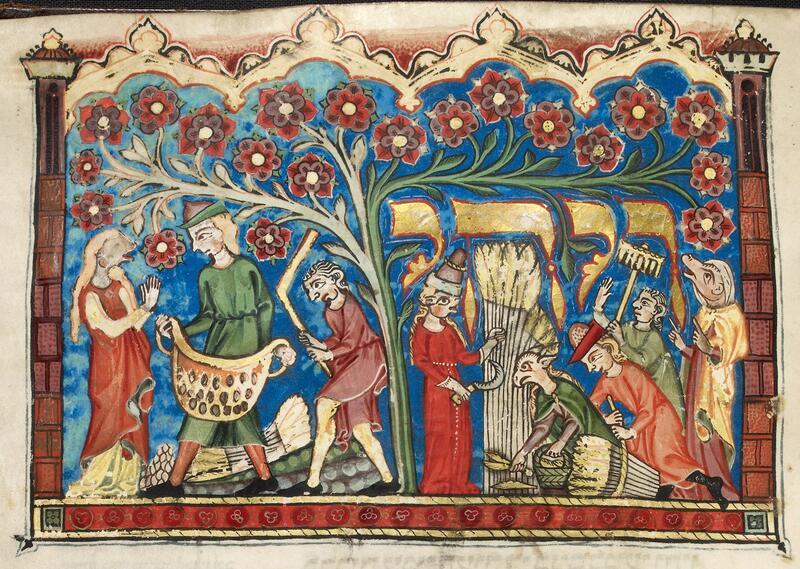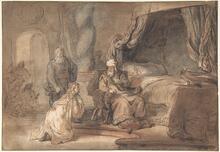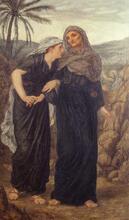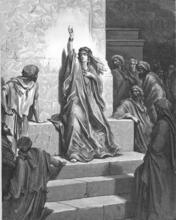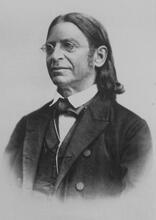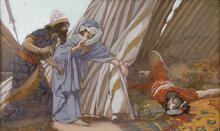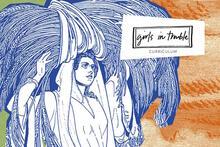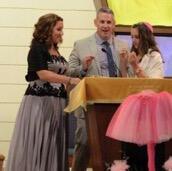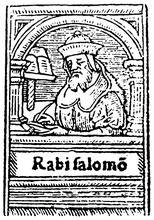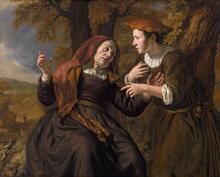Ruth: Bible
While the Book of Ruth centers around the story of Naomi, Ruth’s mother-in-law, Ruth’s narrative has its own significance. Ruth is a Moabite immigrant to Judea due to her first and second marriages and struggles to adjust to the culture. She expresses much deference to Naomi and is often forced into subservience to her second husband, Boaz. Modern analyses both criticize and celebrate her actions and discuss how her story illustrates the patriarchal structure. However, she is exalted in the Bible for her devotion and as the great-grandmother of David.
Ruth’s name provides the title for the Book of Ruth, probably a piece of historical fiction set in the time of the judges. Ruth is a Moabite woman who marries a Judean immigrant named Mahlon (1:1–4; 4:10). Upon his death she becomes a childless widow who chooses to accompany her mother-in-law, Naomi, to Judah. Naomi protests the decision (1:11–13), but Ruth perseveres. She pledges total loyalty, even unto death, to Naomi, her people, and her god YHWH (1:16–17). When the women of Bethlehem greet them both, Naomi fails to acknowledge that Ruth is with her. Instead, the storyteller reports her presence as Moabite immigrant (a foreigner) and daughter-in-law (1:19–22).
Scenes One and Two
In scene one (1:1–22) Ruth emerges in tension with her culture. She marries outside her own people, disavows the solidarity of her family, abandons her national identity, and renounces her religious affiliation. In the entire biblical epic of Israel, only Abraham approaches this radicalness, but then he had a call from God (Gen 12:1–3) and also a wife. Ruth stands alone, without support human or divine. Moreover, she reverses sexual allegiance. A young woman commits herself to an old woman in a world where life depends upon men.
Scene two (2:1–23) portrays Ruth taking the initiative to find food. By chance (a code for the divine) she comes to the field of a prosperous man named Boaz, a relative of Naomi (2:1–3). He asks, “To whom does this young woman belong?”—truly a patriarchal question. Though the question fits his culture, it does not fit Ruth, who remains in tension with the culture. The servant’s answer fails to give her name but identifies her as “the Moabite who came back with Naomi from the country of Moab” (2:6). It derives her identity from her strangeness and from another woman.
Boaz allows Ruth to glean in his field and arranges for her safety. She responds with appropriate deference, noting his favor and her foreignness (2:8–9). Yet ironic subtlety marks her speech. The favor Boaz gives her is the favor that she has sought. Therefore, she (and chance), not he, is shaping her destiny. Boaz recognizes her distinctiveness. He describes her as one who has left her mother and father and her native land to live among a people she did not know (2:11). His language echoes the call of Abraham (Gen 12:1) and so locates Ruth within the saga of Israel. Further, Boaz invokes blessing upon her from YHWH under whose protective “wings” (kenafayim) she has taken refuge (2:12). At evening, when Ruth reports to Naomi, the daughter learns that Boaz is a redeemer within their larger family. Her own concerns, however, remain loyalty to Naomi and the availability of food (2:17–23).
Scenes Three and Four
If scene two portrays Ruth’s struggle to survive physically, scene three represents her struggle to survive culturally (3:1–18). It involves a bold act, potentially dangerous and compromising. At the insistence of Naomi, Ruth agrees without question to pursue marriage with Boaz. The plan calls for her to visit him on the threshing floor after he has celebrated the harvest and gone to sleep. She is to uncover his “feet,” a euphemism for genitals, and then he will tell her what to do.
Ruth’s actions elicit from Boaz a second question (see 2:5). Unlike his first, it addresses her directly and asks for her personal identity: “Who are you?” (3:9). In answering, Ruth gives her name. Then, contrary to Naomi’s assurance, she tells Boaz what to do: “Spread your wing [kanaf, translated “cloak” in the NRSV] over your servant, for you are next-of-kin.” By a wordplay on wing Ruth challenges Boaz to heed his earlier prayer for her blessing (2:12). This foreign woman calls an Israelite man to responsibility.
Even though Boaz informs Ruth that another man has first rights to her, Boaz himself responds graciously to her proposal. He calls Ruth a “worthy woman” (eshet hayil), the same phrase that Proverbs uses to depict the “capable wife” (Prov 31:10). He protects Ruth from discovery and provides her with food (3:14–15). In the morning she reports to her mother-in-law all that Boaz has done but omits any report of her own bold words and deeds. Characteristically, Ruth’s last words focus on her mother-in-law and the availability of food (3:17).
In scene four (4:1–22) Ruth, like Naomi, does not talk but is talked about. Before the male elders at the city gate, the place where issues are settled by the community, Boaz presents the case of the women to the unnamed man who has first rights. When this man learns that his obligation to purchase land from Naomi entails the marrying of Ruth, he refuses (4:1–6). The way is then open for Boaz to do the redeemer’s part. The elders who witness the transaction address him with words about Ruth, though they never use her name. She is “the woman” and “this young woman” whom they compare to the ancestral mothers Rachel, Leah, and Tamar. These men see her as fulfilling the traditional values of fertility and the continuation of a male lineage (4:7–12). Accordingly, Boaz takes her as his wife, and she bears a son (4:13). A man’s concerns have subsumed the woman, Ruth.
Her story ends, however, not with the male elders but with the women of Bethlehem (see 1:19). In transferring Ruth’s child to Naomi, they remind her that “your daughter-in-law who loves you, who is more to you than seven sons, has borne him” (4:14–15). Ruth leaves the story exalted above the ideal number of male children and identified through the woman to whom she swore allegiance even beyond death.
Analysis
Feminist readings of Ruth diverge sharply. One perspective faults her for perfection, for being compliant, self-effacing, and a mere pawn of Naomi. Another analysis praises her for faithfulness, for making radical moves, for risking dangerous acts, and for being a devoted partner of Naomi. Still another sees her used to espouse the patriarchal values of marriage and progeny, and then discarded.
The counter view sees her challenging patriarchy even while trapped within it. Her foreign identity also receives opposing interpretations. One view holds that the story affirms this Moabite woman, embracing her fully within Judah as the great-grandmother of David (see 4:17–21). Another view holds that the story rejects this Moabite woman, erasing her at the end by giving her child to Naomi and so according David a pure genealogy.
Outside the story, the Gospel of Matthew claims Ruth as the mother of her child. Moreover, it places her alongside Tamar, “the wife of Uriah,” and Mary as the only women in the genealogy of Jesus (Matt 1:3, 5, 6, 16).
Adelman, Rachel. "Weaving the Messianic Light: Law and Narrative in Making of the Messianic Dynasty.” In The Female Ruse: Women's Deception and Divine Sanction in the Hebrew Bible, 90-121. Sheffield: Sheffield Phoenix Press, 2015.
Brenner, Athalya, ed. A Feminist Companion to Ruth. Sheffield, England: 1993.
Davis, Andrew R. "The literary effect of gender discord in the book of Ruth." Journal of Biblical Literature (2013): 495-513.
Frymer-Kensky, Tikva and Tamara Cohn Eskenaz. JPS Bible Commentary: Ruth. Philadelphia: JPS, 2011.
Frymer-Kensky, Tikva. "Royal Origins: Ruth on the Royal Way" and "Royal Origins: The Moabite.” In Reading the Women of the Bible, 238-263. New York: Schocken Books, 2002.
Kalmanofsky, Amy. "Ruth and Naomi." In Dangerous Sisters of the Hebrew Bible, 157-174. Minneapolis: Augsburg Fortress Press, 2014.
Kates, Judith A., and Gail Twersky Reimer, eds. Reading Ruth: Contemporary Jewish Women Reclaim a Sacred Story. New York: 1994.
La Cocque, André. “Ruth.” In The Feminine Unconventional: Four Subversive Figures in Biblical Tradition. Minneapolis: 1990, 84–116.
Lee, Eunny P. “Ruth the Moabite: Identity, Kinship, and Otherness.” In Engaging the Bible in a gendered world: An introduction to feminist biblical interpretation in honor of Katharine Doob Sakenfeld. Edited by Linda Day and Carolyn Pressler. Presbyterian Publishing Corp, 2006.
Levine, Amy-Jill. “Ruth.” Women’s Bible Commentary, edited by Carol A. Newsom and Sharon H. Ringe, 78–84. Kentucky: 1992.
Meyers, Carol, General Editor. Women in Scripture. New York: 2000.
Pa, Anna May Say. “Reading Ruth 3:1-5 from an Asian Woman’s Perspective.” In Engaging the Bible in a gendered world: An introduction to feminist biblical interpretation in honor of Katharine Doob Sakenfeld. Edited by Linda Day and Carolyn Pressler. Presbyterian Publishing Corp, 2006.
Trible, Phyllis. “A Human Comedy.” In God and the Rhetoric of Sexuality. Philadelphia: 1978, 31–59.

